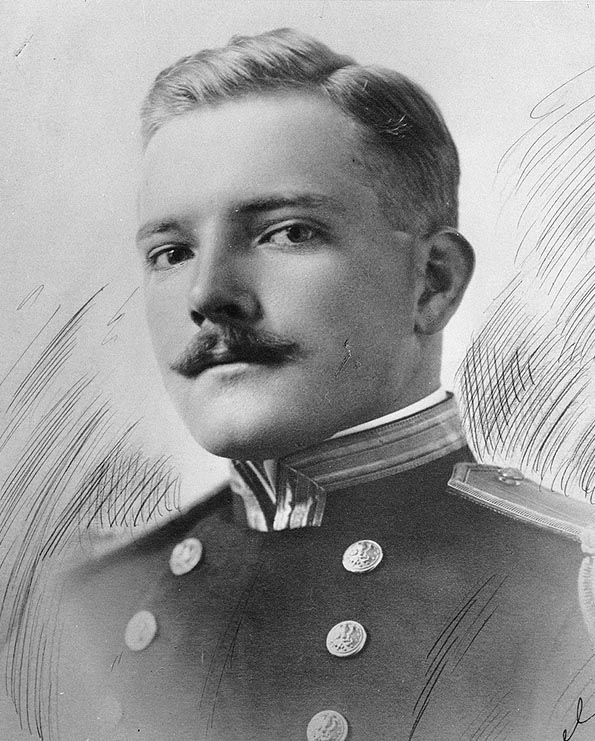
Lieutenant Commander William Merrill Corry, Jr., United States Navy, was assigned as aviation aide to Admiral Henry Braid Wilson, Jr., Commander-in-Chief, Atlantic Fleet, aboard the battleship USS Pennsylvania (BB-38). On Saturday, 2 October 1920, Lieutenant Commander Corry, in company with Lieutenant (Junior Grade) Arthur C. Wagner, Reserve Force, United States Navy, flew from Mitchel Field, Mineola, Long Island, New York, to Hartford, Connecticut. Their airplane was a two-place, single-engine Curtiss JN-4 biplane. The flight was intended as a cross-country flight for the two pilots to maintain proficiency.
On arrival at Hartford, because there was no airfield in the vicinity, the pair landed on the grounds of the Hartford Golf Club. They stayed over the weekend as guests of Colonel Hamilton R. Horsey, formerly chief-of-staff of the 26th Division, U.S. Army, during the St. Mihiel and Meuse-Argonne offensives of World War I, and Lieutenant Colonel James S. Howard.
At about 3:00 p.m., on Sunday, 3 October, Corry and Wagner were ready to return to Mineola. Lieutenant (j.g.) Wagner was flying from the forward cockpit, while Lieutenant Commander Corry was in the rear cockpit.
The Curtiss took off toward the north and at about 50 feet (15 meters) altitude, turned toward the southwest. As the airplane passed over the golf course club house, Corry waved to Colonel Horsey. The airplane approached a large grove of trees, then turned right, back to the north. The engine stopped and the airplane nose-dived into the ground from about 75 feet (23 meters).
The Hartford Courant reported:
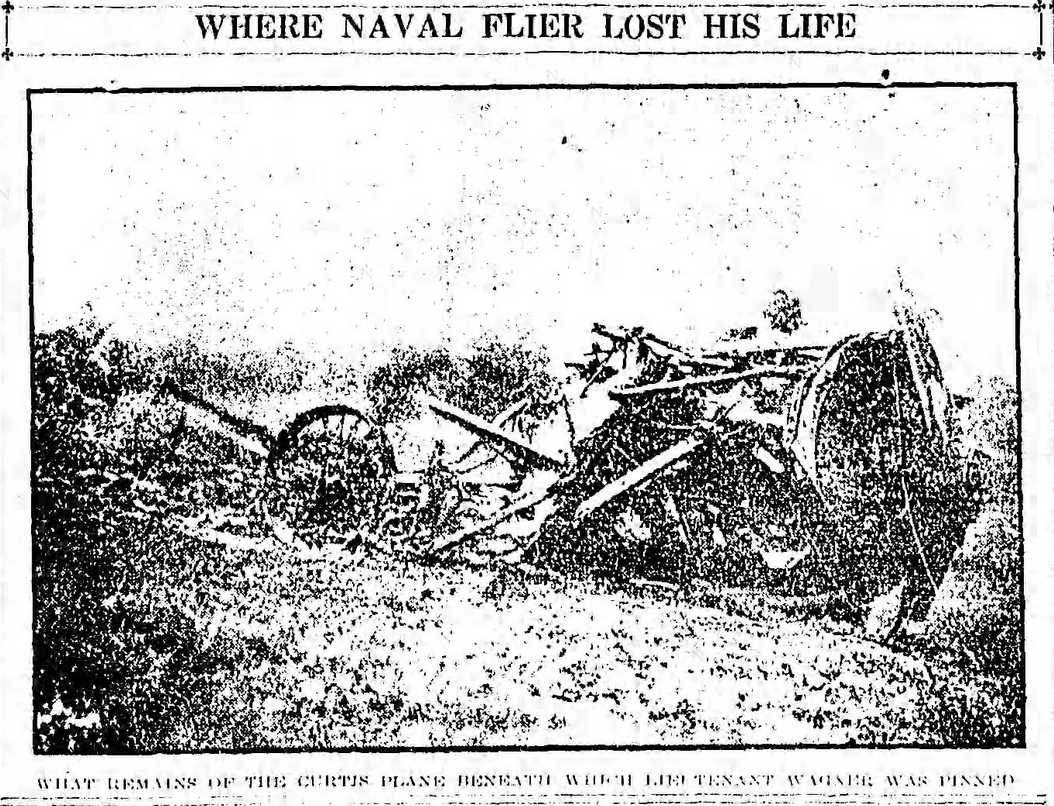
The machine hit the ground at a sharp angle and immediately turned over endwise, the propeller catching in the ground. Commander Corry was catapulted from his seat, but Wagner, who had strapped himself into his seat, was less fortunate. As the machine turned over it burst into flames, enveloping him in a wash of blazing gasoline from the broken tank.
Corry’s Bravery.
Commander Corry, picking himself up from the ground, was the first to rush to the aid of his comrade. It was in this way that his coat caught fire with the resulting burns to his hands and face. He was unable to pull Wagner free and it was not until Walter E. Patterson of the Travelers Insurance Company, and Martin Keane, an attache of the club, added their efforts this was successfully accomplished. Club members rushed from the clubhouse with several gallons of olive and sweet oil and were on hand almost as soon as the stricken man was freed from his seat. While the burning clothing was being removed from Wagner’s body, Benjamin Allen, a porter in the club, quickly wrapped his coat around Corry’s head and thus cut off any chance of the flames reaching the officer’s nose or eyes.
Allen then, with Corry helping, removed the coat and smothered the other smouldering pieces of clothing. Corry’s hands and face were so badly burned that not a trace of skin was left untouched. Several ribs were also broken.
Wagner Game.
Wagner was rolled over on the ground by willing hands to extinguish the flames and with the help of the two men who had dragged him from his place beneath the plane, such of his clothing as still remained unburned was stripped from his body to make way for dressings in olive and sweet oil, which by this time were available. He was wrapped in swaths of oil soaked linen and cotton sheeting to allay the agony of his burns. Every scrap of clothing was almost entirely consumed and his shoes were burned to a crisp. Throughout the process, Wagner, fully conscious, was directing the efforts of the willing helpers, despite the fact that his face was beyond recognition, with nose and ears burned from his head.
He remained game even to the time when he was being tenderly lifted to the ambulance, when he thanked those who had helped telling them that he was sure they had done all they could. . .
. . . In spite of a heroic fight for life, covering nearly eight hours from the time he received his burns, Wagner died soon after 10 o’clock. The tremendous display of pluck and vitality shown by the man through all of his agony was the marvel of all the physicians and nurses in the hospital. . . .
—The Hartford Courant, Monday Morning, 4 October 1920, Page 1, Column 8, and Page 2, Column 1.
Four days later, 7 October 1920,¹ Lieutenant Commander Corry also died of his injuries. He was just 31 years old.
For his bravery in attempting to rescue Lieutenant (j.g.) Wagner, Lieutenant Commander William Merrill Corry, Jr., United States Navy, was awarded the Medal of Honor. His citation reads:
“For heroic service in attempting to rescue a brother officer from a flame -enveloped airplane. On 2 October 1920,² an airplane in which Lt. Comdr. Corry was a passenger crashed and burst into flames. He was thrown 30 feet clear of the plane and, though injured, rushed back to the burning machine and endeavored to release the pilot. In so doing he sustained serious burns, from which he died 4 days later.”
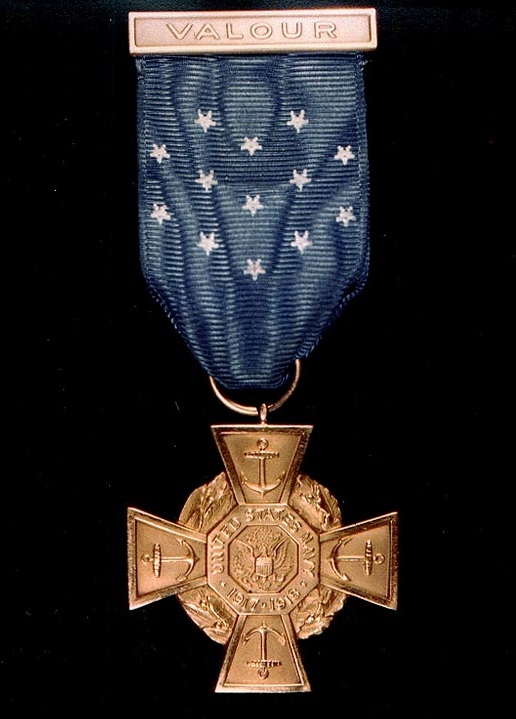
William Merrill Corry, Jr., was born 5 October 1889 at Quincy, Florida. He was the second of six children of William Merrill Corry, a tobacco dealer, and Sarah Emily Wiggins Corry.
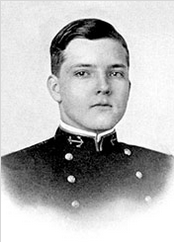
“Bill” Corry was admitted to the United States Naval Academy, Annapolis, Maryland, as a midshipman, 20 June 1906. He was a classmate of future Admiral Marc A. Mitscher. On 7 July 1910, Midshipman Corry was assigned to the 16,000 ton Connecticut-class battleship USS Kansas (BB-21). He was commissioned an Ensign, United States Navy, 7 March 1912.
Ensign Corry was promoted to Lieutenant (junior grade), 7 March 1915. He was assigned to the naval aeronautic station (Y-13) at Pensacola, Florida, 7 July 1915. On completion of flight training, Lieutenant (j.g.) Corry was designated Naval Aviator No. 23, 16 March 1916.
26 November 1916, Lieutenant (j.g.) Correy was assigned to the Tennessee-class armored cruiser USS Seattle (ACR-11). In 1917 he was assigned to USS North Carolina (ACR-12).
The United States entered World War I on 6 April 1917. On 22 August 1917, Lieutenant (j.g.) Corry was sent to France for for duty with the U.S. Naval Aviation Forces in Europe. Corry was promoted to the rank of Lieutenant, 7 March 1918. He was placed in command of the aviation school at Le Croisic, on the western coast of France, 7 November 1917. While there he was awarded the Navy Cross, “for distinguished and heroic service as an Airplane Pilot making many daring flights over the enemy’s lines, also for untiring and efficient efforts toward the organization of U.S. Naval Aviation, Foreign Service, and the building up of the Northern Bombing project.” (The Northern Bombing Group targeted bases supporting German submarine operations.) France appointed him a Chevalier de la légion d’honneur.
Lieutenant Corry took command of the Naval Air Station at Brest, France, 7 June 1918. He was promoted to the temporary rank of Lieutenant Commander, 1 July 1918. He remained at Brest until the Armistice, 11 November 1918. He was involved in the demobilization of U.S. forces in France and Belgium. He also served in various staff assignments.
Lieutenant Commander Corry was ordered to return to the United States as aide for aviation to the Chief-of-Staff Atlantic Fleet. He sailed from Antwerp, Belgium on 2 June 1920, aboard SS Finland, bound for New York.
Lieutenant Commander William Merrill Corry, Jr., Medal of Honor, Navy Cross, Chevalier de la légion d’honneur, is buried at the Eastern Cemetery, Quincy, Florida.
Following his death, the United States Navy named an auxiliary landing field at Pensacola. Florida, Corry Field, in his honor. A nearby airfield assumed the name in 1928, and is presently called NAS Pensacola Corry Station.
Three United States Navy warships have also been named USS Corry. On 25 May 1921, a Clemson-class “flush-deck” or “four-stack” destroyer, USS Corry (DD-334), was commissioned. It was decommissioned in 1930.
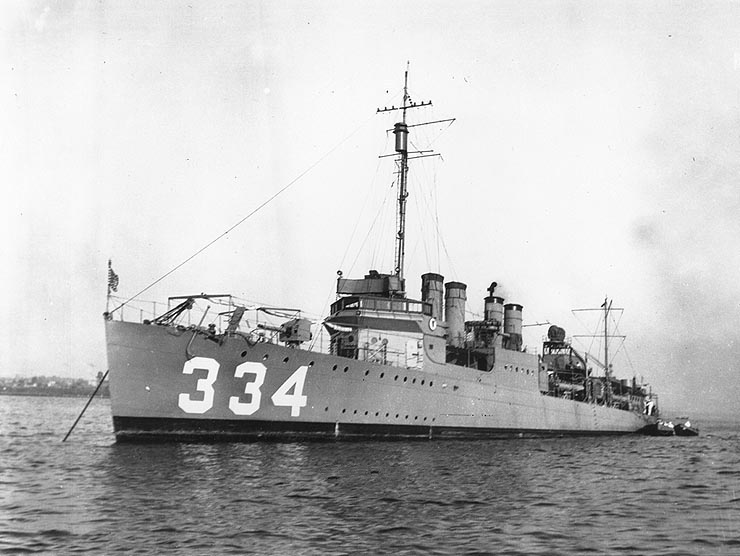
The Gleaves-class destroyer USS Corry (DD-463) was launched 28 July 1941, christened by Miss Jean Constance Corry, with Miss Sara Corry as Maid of Honor. The new destroyer was commissioned 18 December 1941. Corry is notable for its participation in anti-submarine operations in the Atlantic, sinking U-801 on 17 March 1944. Corry rescued 47 sailors from that submarine, and another 8 from U-1059, which was sunk two days later.
Corry was herself sunk by during an artillery duel with a German coastal battery off Utah Beach, Normandy, 6 June 1944. Of the destroyer’s crew of 276 men, 24 were killed and 60 were wounded. Broken in half, the ship sank in shallow water. The American Flag at her masthead remained visible above the water as the ship settled on the sea bed.
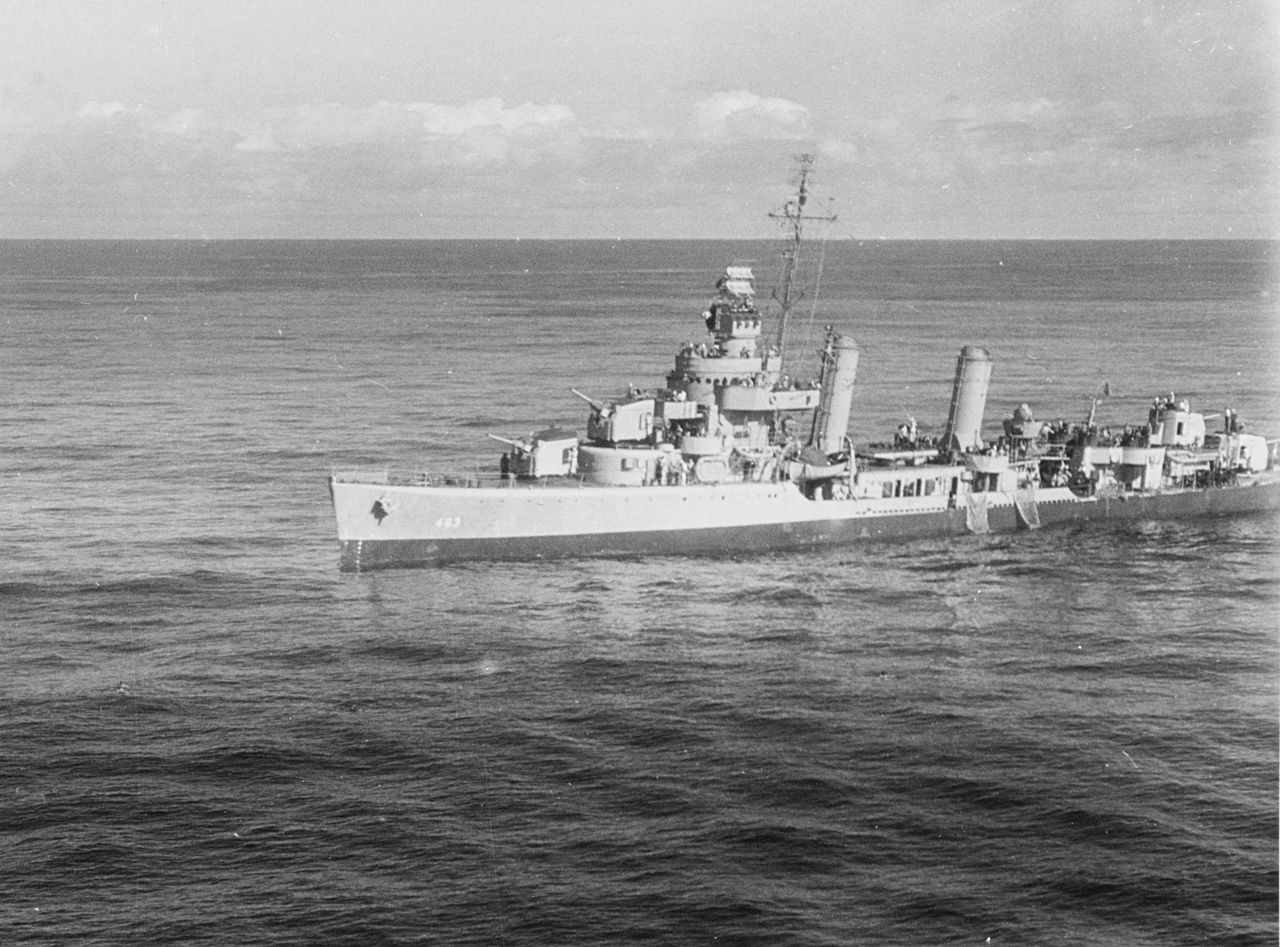
The Gearing-class destroyer USS Corry (DD-817) was commissioned 27 February 1946 at Orange, Texas. The ship’s sponsor was Miss Gertrude Corry, niece of Lieutenant Commander Corry. Corry served the U.S. Navy until decommissioned 27 February 1981 after 35 years of service. It was turned over to Greece and renamed HS Kriezis (D-217). The ship was finally retired in 1994, and scrapped in 2002.
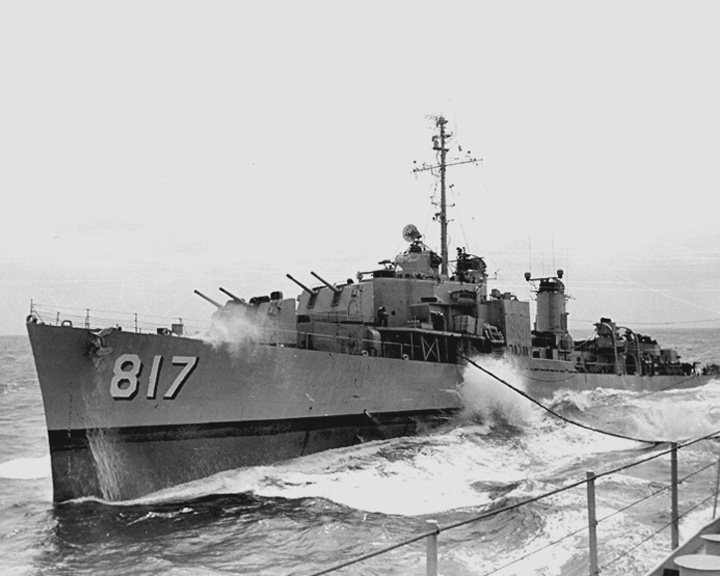
Lieutenant (junior grade) Arthur C. Wagner, Reserve Force, United States Navy, was born 18 August 1898. He was the son of William Wagner and Elizabeth Genting (?) Wagner.
At the time of his death, Lieutenant Wagner was assigned to the Atlantic Fleet Ship Plane Division, Mitchel Field, Mineola, Long Island, New York. He had previously served aboard USS Nevada (BB-36). In 1919 he trained as a pilot at Naval Air Station Pensacola, and was then assigned to USS Shawmut (CM-4), a minelayer which had been reclassified as an airplane tender.
Lieutenant (j.g.) Arthur C. Wagner was buried at the Old Cathedral Cemetery, Philadelphia, Pennsylvania, 8 October 1920.
¹ While many sources give the date of Corry’s death as 6 October 1920, probate documents filed with the County of Gadsen court on 5 November 1920, and signed by Corry’s mother, Sarah E. Corry, give the date as 7 October 1920. Further, The Hartford Courant, in its Thursday, 7 October 1920 edition, at Page 1, Column 2 and 3, reported: “Lieutenant Commander William M. Corry, in charge of the Curtiss naval airplane which crashed to earth at Hartford Golf Club last Sunday afternoon, died at the Hartford Hospital at 2:30 o’clock this morning of burns. . . .”
² Most sources place the date of the crash as 2 October 1920. Contemporary newspapers, though, e.g., The Hartford Courant, The Philadelphia Inquirer and The Chicago Tribune, reported the date as 3 October 1920.
© 2017, Bryan R. Swopes
Hi Bryan, I think you might want to check Lt. Wagner’s d.o.b. 1988 sounds a little off..
Thanks, Tom.
Pretty sure the Admiral LCDR Corry served was Henry Braid Wilson, not William. There was a Adams-class DDG named after ADM Wilson.
Boat Guy, you are correct. Thank you for the corrrection.